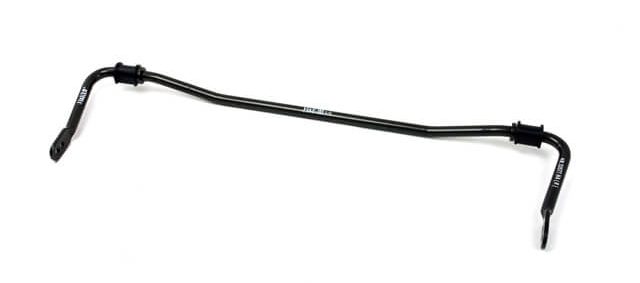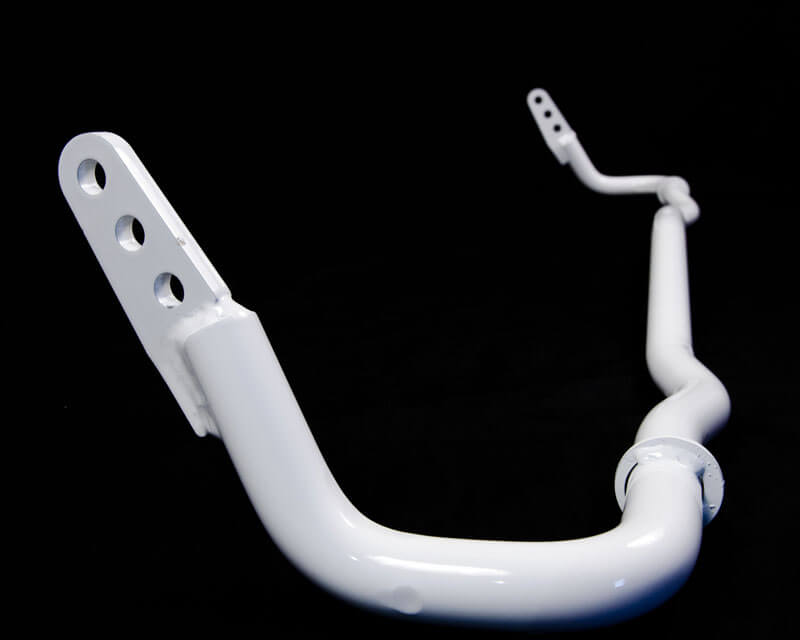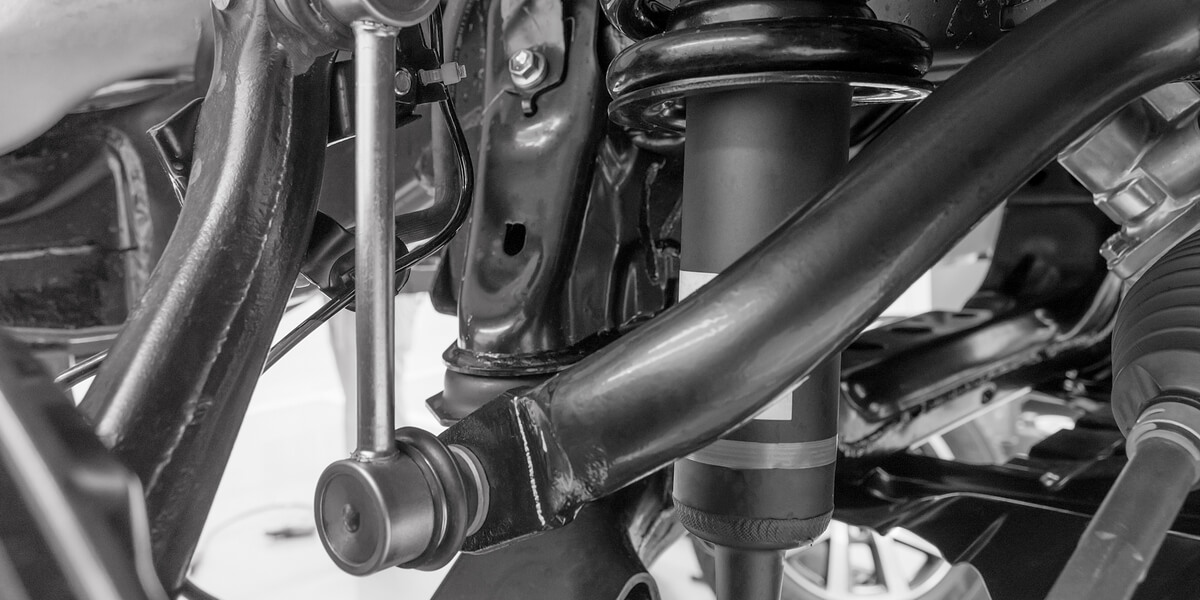
Everything you need to know about the sway bar !
Every road-going vehicle follows a simple rule during cornering – it leans on the outside. There is no escaping it – it’s how physics in our universe works. And, the worst thing about body roll is that it limits the cornering grip of the car.
Under hard cornering, the inside wheels may want to lift off from the road while all of the car's weight is put on the outer wheel. Such a situation dramatically lowers the traction of the tire on the pavement, which limits performance in the corners. Ask any enthusiast for the worse enemy on the track, and they will probably tell you that it’s body roll.
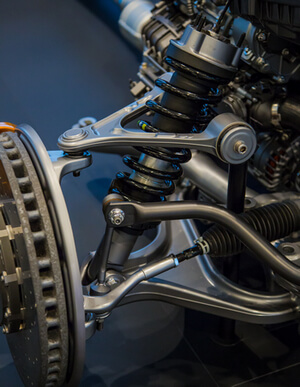
Fortunately, many sports cars and performance cars have anti-roll bars built-in (also called anti-sway or anti-roll bars). On the outside, sway bars look quite simple, but it’s the purpose they serve that is important – they mitigate body-roll issues.
Sway bars are great for improving the cornering ability of any car, especially on flat roads. For those reasons, many car manufacturers already have been using anti-roll bars on their sporty cars from the factory for years. But nowadays, sway bars have become common even in compact cars and crossovers. And thanks to their simple design, sway bars are also immensely popular in the tuning scene as well.
On the other hand, some types of vehicles simply won’t work well with sway bars, such as off-road-focused SUVs and pickup trucks. With these vehicles, manufacturers will often opt for disconnecting sway bars instead to allow for better manueuvrability off the beaten-paths.
If you want to learn more about sway bars and what they do, you’ve come to the right place. In this article, we’ll cover the basics operating principle of a sway bar, the most common types, the advantage and disadvantages of installing an aftermarket sway bar, and the average cost to replace one. So without further ado, let’s dig in!
What is a sway bar?
The sway bar is a torsion spring that connects the wheels on each axle, usually formed in a “U” shape. It's generally made from stainless steel, but in some exotic cars, you can also find aluminum or carbon-fiber anti-roll bars. Most sway bars are cylindrical.
Most cars have one on the front axle, but some also have sway bars at the rear axle. In fact, more and more car models come equipped with dual sway bars every year, even the cheaper models. On the other hand, powerful performance cars, where high cornering speed is essential, always have anti-roll bars at both axles.
What does a sway bar do?
To put it simply, the sway bar uses its torsional rigidity to level the weight applied to each wheel during cornering. To react quickly to steering inputs, sway bars connect via links to the suspension control arms. At the beginning of a turn, as soon as the inside wheel starts to lift off the ground, the sway bar pushes the outside wheel upward.
Now, each time you enter a corner, many forces affect the anti-roll bar itself as well. That’s why it must be locked into place. Otherwise, it won’t transfer the force from one wheel to another – it will only move up and down. For those reasons, sway bars always run through bushings, which ensure that the bar stays in place. The bushings also take care of limiting vibrations entering the cabin.
All of this keeps the vehicle more level in the corners, at least until the bar starts twisting. Stiffer or thicker anti-roll bars can do an even better job of keeping the vehicle level during hard cornering. Adjustable sway bars, as the name implies, can even be adjusted to apply more or less pressure to the inner wheel.
The dark side of it
With that being said, sway bars also carry some disadvantages. Sure, they level the vehicle, but they also make the wheels a little less independent of each other.
More particularly, as soon as one wheel hits a pothole, the sway bar transfers the force to the opposite wheel. That can severely lower the perceived ride quality inside the vehicle. For that reason alone, sports cars usually have a stiffer ride with more vibrations transferred to the cabin.
That’s why car manufacturers put a lot of effort when designing a car to retain a smooth ride, while also improving cornering. The sway bars you’d see from the factory aren’t overly thick and are usually only there to maintain that balance.
That's also the main reason why they aren’t the best solution for off-road SUVs. With these vehicles, you want the wheels to be as independent of each other as possible. That is very important on uneven terrain, especially when trying to go over large rocks, or when going down steep hills, where every wheel must have contact with the ground.
[divider style="solid" top="20" bottom="20"]
Get a repair manual for your car!
[divider style="solid" top="20" bottom="20"]
Different types of sway bar
Apart from the regular stiff U-shaped sway bar, other types exist as well. With these advanced designs, engineers and designers try to achieve that perfect balance between comfort and performance.
Classic sway bar
The “classic” model refers to the U-shaped steel tube. This version is great for leveling the car during hard cornering, but not the best option for comfort.
I’ve driven many cars with overly stiff and thick “classic” sway bars that are borderline uncomfortable on uneven roads. Moreover, since the movement of one wheel affects the other, cars with classic sway bars don’t feel planted on bumpy roads.
Active anti-roll bar
The active anti-roll bar is a relatively new solution, usually reserved for high-performance cars and SUVs. The first car that had an active anti-roll bar was the Citroen Xantia. Today, notable examples are the Audi Q7 and Q8, and Lamborghini Urus.
The “active” in the name refers to the electromechanical actuator in the center of the bar. Thanks to the motor, active anti-roll bars can adjust the torsional rigidity in real-time.
More accurately, as soon as the driver turns into a corner, the motor applies torque to the opposing wheel. In other words, during cornering, the active anti-roll bar behaves just like a regular one.
However, an active sway bar leaves the wheels independent of each other when driving in a straight line. This improves the ride quality, but also the directional stability on uneven roads.
And, the best thing about an active anti-roll bar? There is no limit to the torque it applies. So, in theory, the active sway bar can keep the car almost level in the corners.
Furthermore, the driver can often choose between various “modes” via a dial inside the cabin. These modes usually include “Comfort,” “Normal,” and “Sport.”
Adjustable sway bar
You can also adjust the stiffness of adjustable anti-roll bars. However, unlike active anti-roll bars, you can’t do this while driving. Instead, you need to jack up the car, remove the bar altogether, and reattach it afterward. However, adjustable sway bars are also much cheaper than active sway bars for example.
But how do you change the stiffness of a single bar? Well, you just change the length of it. Adjustable sway bars usually have three connecting points and a flexible middle section. Bolting it using the first holes will shorten the overall length of the bar, effectively making it stiffer and vice-versa. In some high-end models, you can even choose between ten levels of adjustment.
Disconnecting sway bar
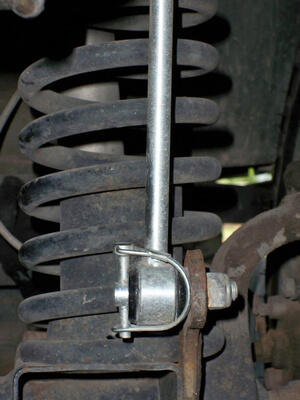
I already said that off-road vehicles don’t need a sway bar, at least not for off-roading. However, due to the lack of an anti-roll bar, these vehicles are much less stable on the road.
To mitigate these issues, some off-road SUVs have disconnecting sway bars. These bars work just like classic bars on the road and keep the car level.
However, a disconnecting sway bar can be disengaged entirely for better wheel articulation while off-roading. This is usually done via a button on the instrument panel, even while driving. A notable example with a disconnecting sway bar is the Jeep Gladiator Rubicon.
On the other hand, if your truck didn't come with a disconnecting anti-roll bar from the factory, you can often install a manual model instead. The principle is the same, if only that you have to physically go disconnect the sway bar with your hand every time. Not as convenient, I'll agree but a lot cheaper and available for most common off-road-oriented SUVs and trucks.
Can you drive with a bad sway bar?
Your car will continue to drive, even with a broken sway bar. However, you need to use some caution, as the cornering performance won’t be the same. Also, depending on how the sway bar breaks, it might still be attached to one or both links. In that case, the sway bar might ge tin contact with other moving part which may create some kind of metal noise, especially when hitting potholes.
To be safe, drive at much slower speeds, especially in the corners. That’s especially true if the front anti-roll bar is broken, which can severely worsen the stability of the car.
Since cars, back in the olden times, used to not even have a sway bar, you could even remove it completely from the vehicle. However, you'll quickly see that your car rolls a lot more while turning.
In all cases, and even if your car doesn't really need one to function, we strongly recommend you have your broken sway bar replaced as soon as possible.
Cost to replace a sway bar
The cost of the anti-roll bar obviously depends on the car model, but it doesn’t vary too much. On compact cars, you might pay around $60 for the bar, while on premium cars up to $100. On top of that, you need to pay for the labor, which costs from $50 to $200 for one axle.
Fortunately, sway bars usually last for the lifetime of the vehicle, unless something extreme happens. It’s the sway bar links that commonly need replacement.
Please note, though, that active and disconnecting anti-roll bars are much more expensive. Moreover, they require specific expertise for removal and installation. In this case, I don’t recommend a DIY approach, especially if you aren’t familiar with the subject.
Cost to replace links
Links are usually more prone to failure than the anti-roll bar itself, just like ball joints and tie rod ends in fact.. These links have the role of connecting the sway bar to the suspension control arms.
The price varies between different vehicles. Nonetheless, it’s generally from $15 to $40, with aftermarket models usually cheaper, and OEM models more expensive.
Most aftermarket links sold today are of high quality. That said, I still recommend buying from well-known and reputable manufacturers.
That said, you also need to pay for the labor, which costs from $50 to $80. Luckily, replacing links is very straightforward, and super easy to replace at home.
To replace a broken link, you first need to jack up the car. Then, remove the wheel where the link is broken. Then, locate the link, unscrew the bolts and remove it altogether. Install the new link, screw in the bolts, and that's it.
Frequently Asked Questions (FAQ)
Can you drive without a sway bar?
Yes, you can drive without a sway bar, but your vehicle’s handling will be compromised, especially during cornering. It will roll more in turns, making the car feel less stable, particularly at higher speeds. While older cars didn’t have sway bars, modern vehicles rely on them for better control and safety.
What happens when a sway bar link breaks?
A broken sway bar link typically results in clunking noises during turns or when hitting bumps, as the sway bar is no longer securely attached to the suspension. While you can still drive, you’ll notice an increase in body roll during cornering, making the car feel less stable. It’s best to have it replaced sooner rather than later.
Do sway bars affect ride comfort?
Yes, sway bars can affect ride comfort, particularly on uneven roads. Stiffer sway bars make the vehicle feel more connected to the road, but they can also transfer more vibrations into the cabin. This is why high-performance cars often have a firmer ride compared to regular cars.
How long do sway bars last?
Sway bars typically last for the life of the vehicle. However, the sway bar links and bushings are more prone to wear and may need replacement over time. Regular inspections can help spot any issues early before they affect your car’s handling.
Can you install a sway bar yourself?
Yes, you can install a sway bar yourself, especially if it’s a straightforward replacement on a regular car. However, more complex systems like active or disconnecting sway bars might require professional installation due to their technical nature. Always consult your vehicle’s repair manual for guidance before attempting a DIY installation.
Choosing the Right Sway Bar
Sway bars often ignite fierce debates among car enthusiasts. Some swear by ultra-stiff bars that lock down their car’s body roll, while others prefer a more balanced approach that blends performance with comfort. Meanwhile, off-road enthusiasts might even opt to remove sway bars altogether to allow for greater wheel articulation over rough terrain.
Here’s the thing – it’s all about preference. My advice? Pick a sway bar that suits your driving style, but keep safety front and center. Sure, your off-road truck might turn into a rock-crawling beast without a sway bar, but remember that on-road cornering will suffer. Likewise, while stiff bars can give your car a more planted feel in the corners, they can also make daily driving less comfortable.
And whatever you do, don’t ignore a broken sway bar or sway bar link. These components play a crucial role in keeping your car stable and responsive. Replacing them isn’t too complicated, especially with the right repair manual guiding you through the process. Keeping your sway bar and links in top condition ensures not only safer handling but also protects other suspension components from unnecessary wear and tear. So, stay mindful of your setup, drive responsibly, and enjoy the road.

